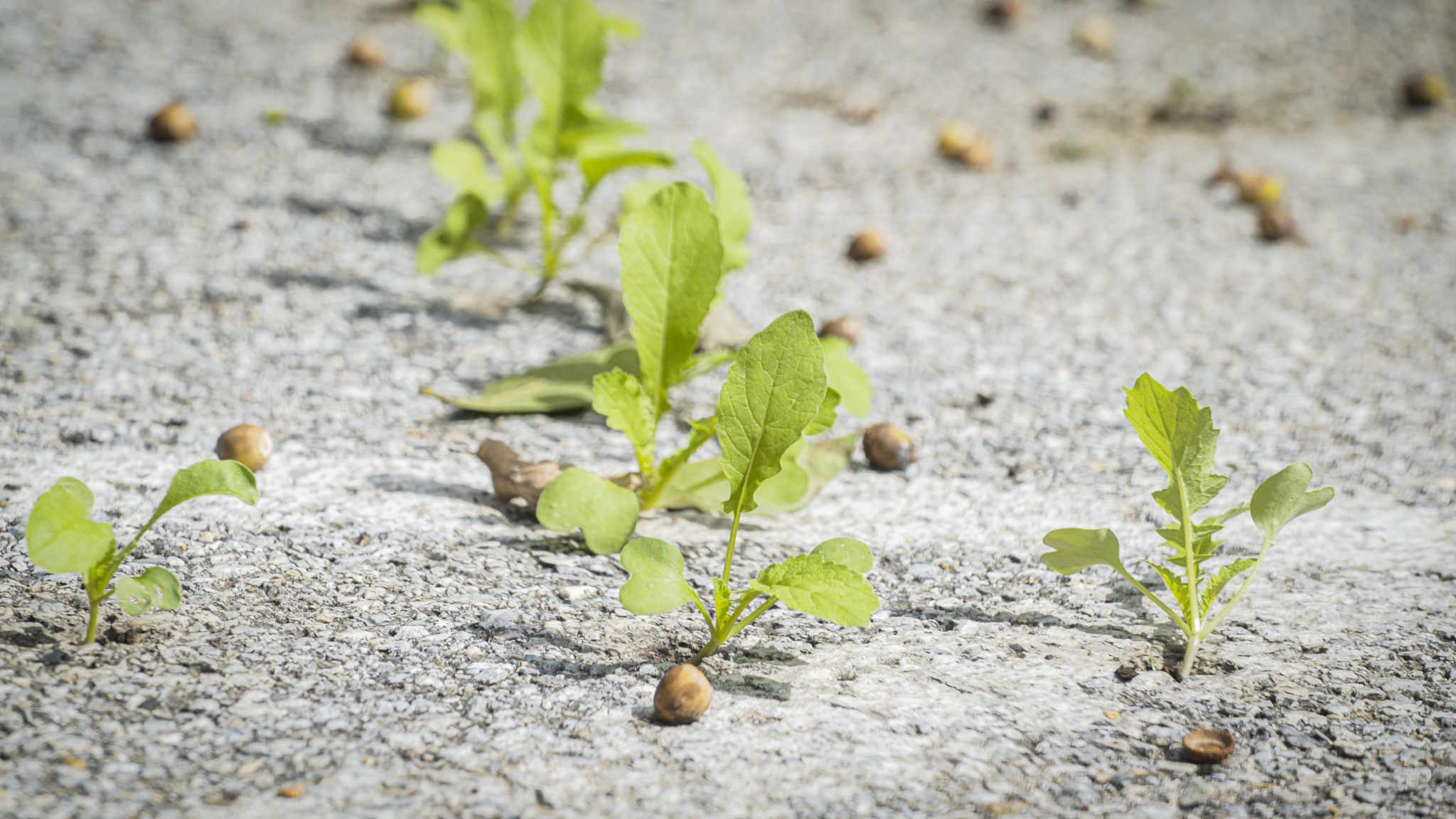
Dan Feinberg’s Radish Project could prove a solution where asphalt paving is a problem.
When Dan Feinberg sees a large expanse of unused asphalt such as the parking lot of an abandoned big box store, he sees damage he’d like to mitigate. So Dan and a colleague from Berea College, soil scientist Mary Parr, are experimenting with a way to break up that surface through plants.
In a corner of the parking lot at the Brown Horticulture Learning Center and on a short stretch of road leading to the Dairy Barn, Feinberg has planted about 1,500 tillage radishes in patterns inspired by the parquet floor of the Empire Parlor and rugs in the Marlboro Room and the Port Royal Parlor. Tillage radishes were bred to relieve soil compaction. At Winterthur, Feinberg hopes they will break up the asphalt.
Visitors can view the project as part of Transformations: Contemporary Artists at Winterthur, which shows how the collection inspires makers and creators today. Feinberg came to Winterthur though its Maker-Creator Fellowship program, which provides special access to the collections and staff for research and inspiration. Opened in September 2021, Transformations is a multi-year commitment to showing the work of contemporary artists and makers in the galleries and garden.
If successful, the project will encourage greening, revitalize nutrients in the underlying soil for the benefit of plants that will eventually replace the radishes, and promote drainage to reduce pollution and other environmental damage from the runoff of surface water.
Feinberg saw the problems created by large areas of asphalt paving at home in the historic village of Paint Lick, Kentucky, where a buildup of asphalt increases problems during heavy rains and floods.
“I look at this big parking lot every day and see plants growing through the cracks,” Feinberg says. “Then I started to wonder if we could use plants to help mitigate the problem.”
With a special interest in patterns, Feinberg, a professor of art at Berea, found Winterthur rich with examples in its collections of wallpapers and textiles. Most people see vegetation growing through asphalt as a sign of dereliction or neglect. “By planting radishes in patterns, we send an intentional signal that a problem is being addressed,” Feinberg says.
In spring 2021, he spent about a month mapping the planting area, marking the patterns, drilling an estimated 1,500 holes—three-quarters of an inch in diameter—through the asphalt, planting radish seeds with compost from Winterthur and help from Winterthur staff, and then waited while nature took its course.
Fracturing around some holes mean the first planting of radishes is working. The holes will be re-seeded every fall and spring. Feinberg is studying light cycles and other conditions as he determines when best to plant. Winterthur staff will document the project’s progress.
Photographic documentation will result in a surprising, augmented reality project that will be revealed in the house in coming years. For now, visitors can see the radishes growing on the Winterthur property.